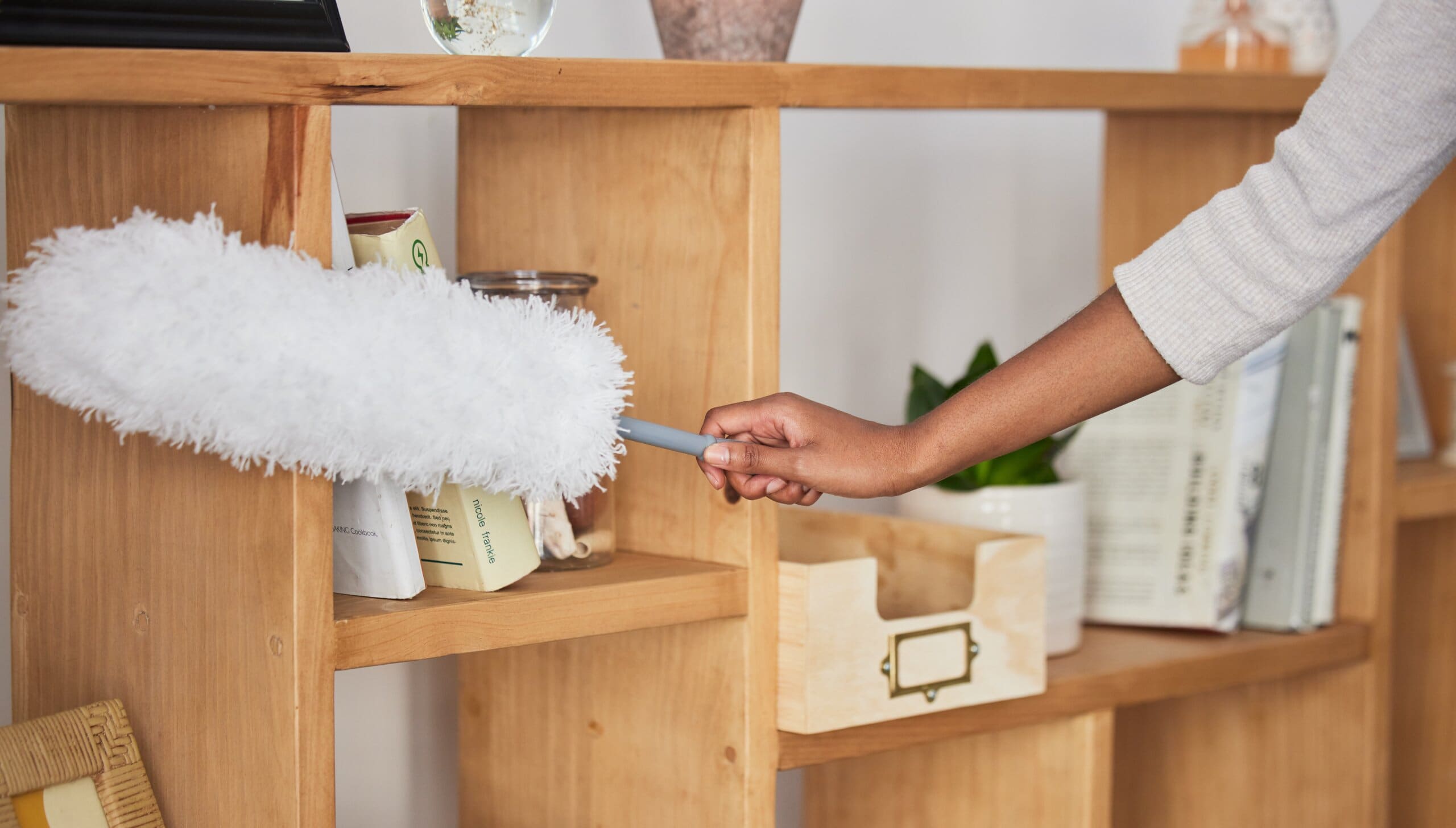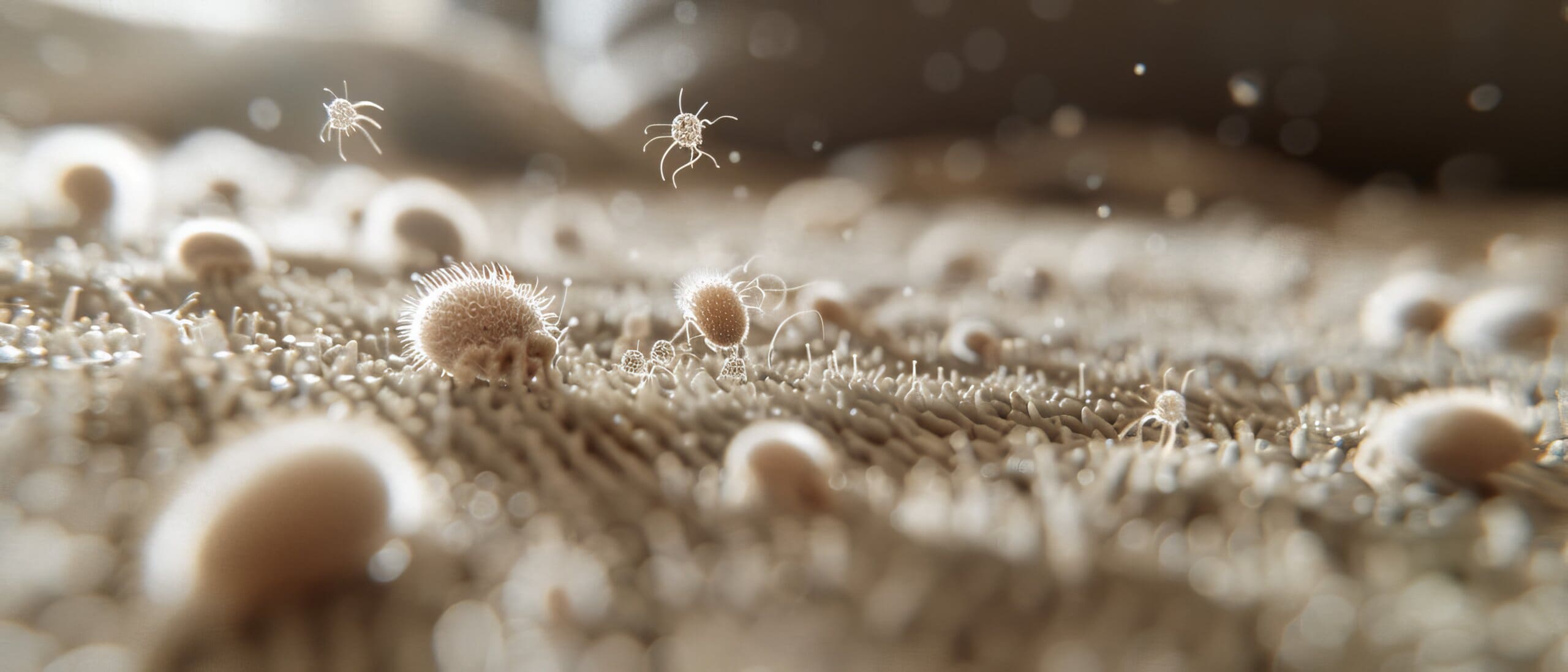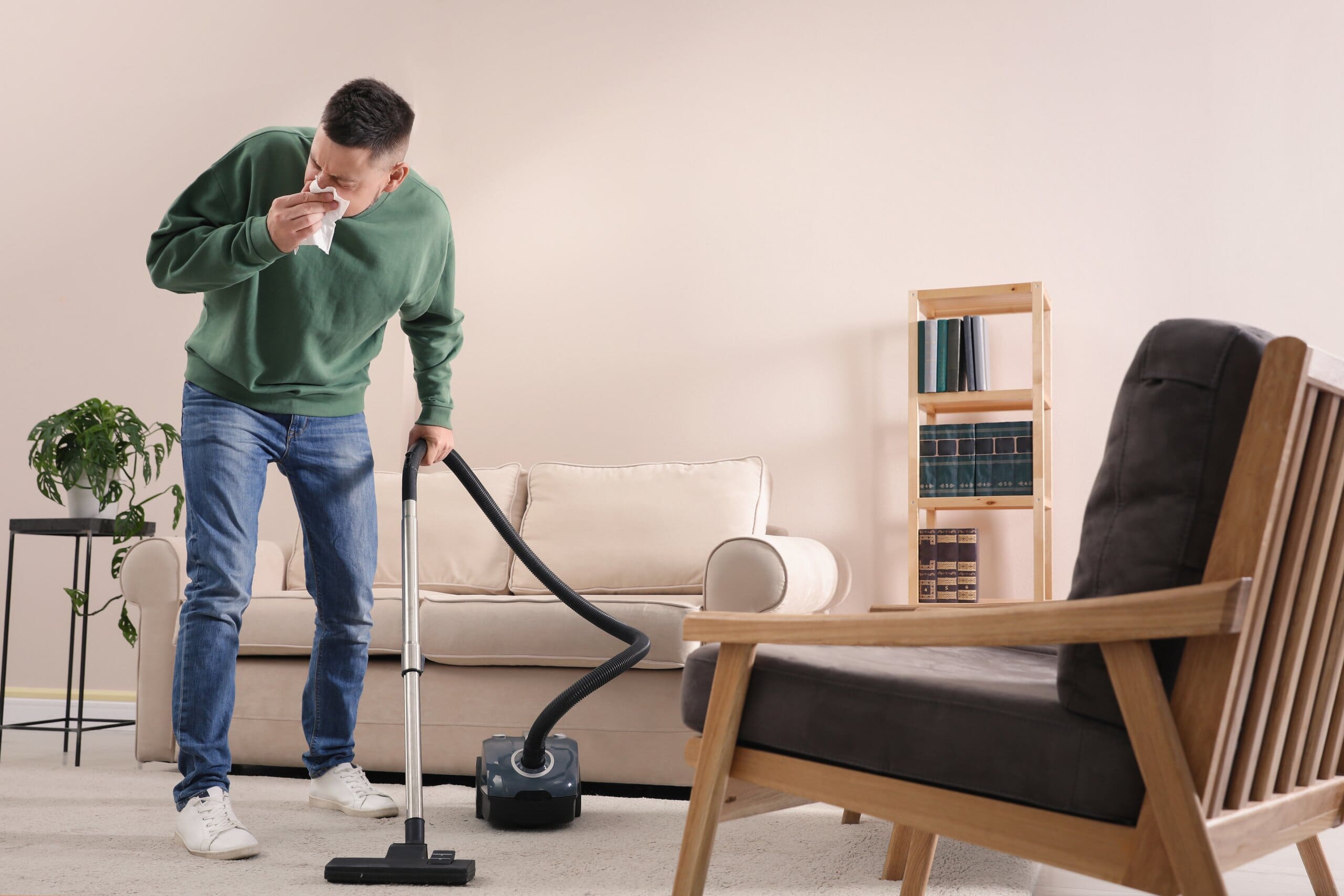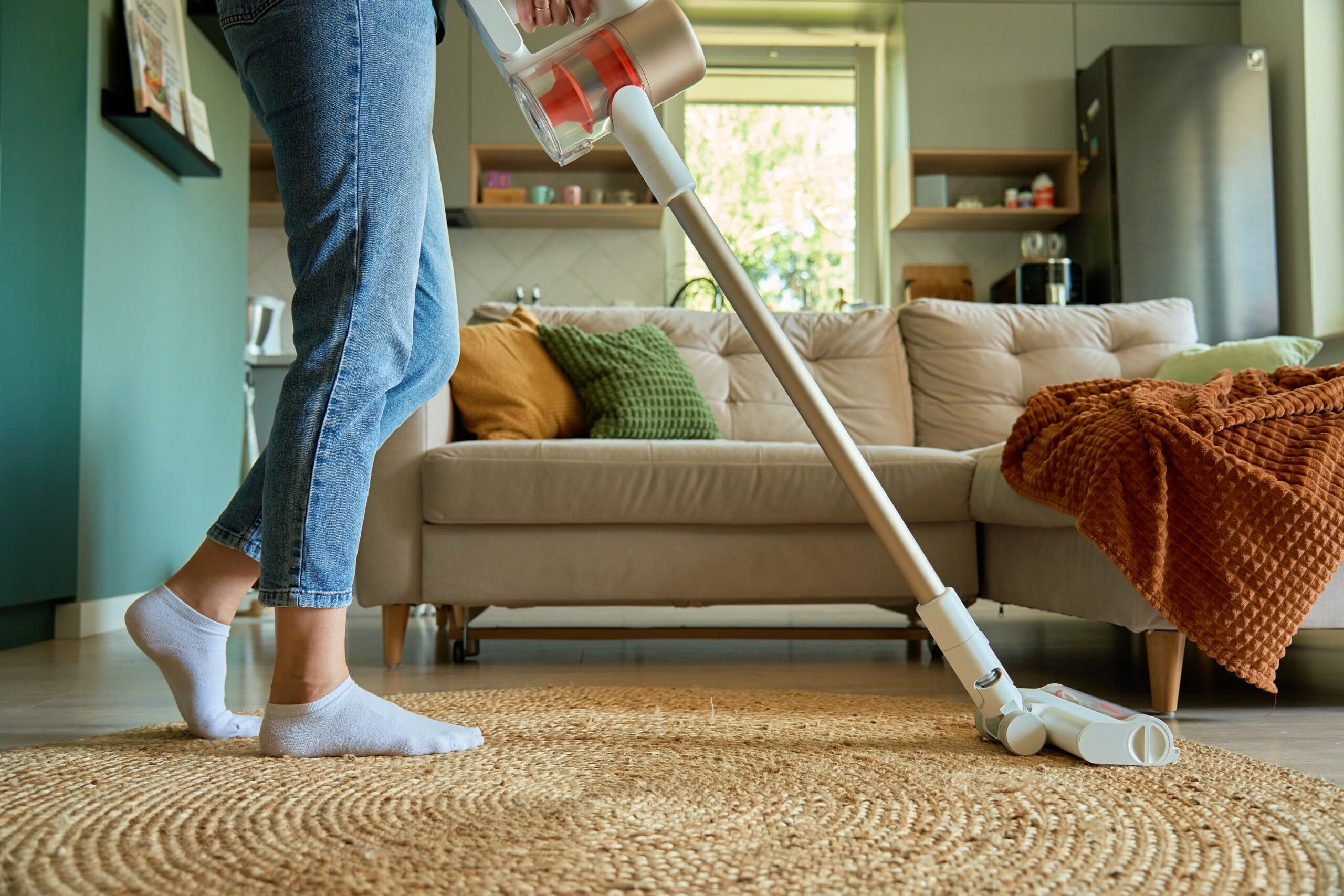Whether you’ve been a homeowner for a while, or you’ve just moved out for the first time, you’re probably already all too familiar with just how tricky it can be to keep your home dust-free.
From those thin grey layers that build up on hard-to-reach shelves when you’re not looking, to the visible clouds that come off your bed and sofa whenever you shake out your duvet or cushions, it seems like it can be a never-ending battle against this most common of household dirts, and the little monsters that call it home – dust mites.
Present in every home around the world, dust mites like nothing more than to snuggle up in your bed alongside you, which can be a big problem if you’re one of the millions of people struggling to sleep with allergies in the UK. Causing everything from runny noses to constant coughing, a dust allergy is no laughing matter.
Which begs the question – how do you get rid of dust mites so you can breathe easy and sleep soundly?
Fortunately, as it turns out, it’s a lot easier to do so than you might think. Take a look at our guide below to learn about our top tips for getting rid of dust mites in your home!

What are dust mites?
If you know what dust is, then chances are, you’ve probably already heard of dust mites – but what are dust mites exactly? And how do they cause allergies?
Well, to answer that first question, dust mites are microscopic creatures that live in every home. Invisible to the naked eye, they can be found in warm and damp areas around your house and consume the flakes of dead skin that we naturally shed each and every day.
Now, as unpleasant as this sounds, dust mites in and of themselves are not harmful to humans and do not cause allergic reactions by coming into contact with you directly or biting you (which dust mites cannot do). However, what can cause allergic reactions are the ‘droppings’ that they leave behind.
Yes, you read that right, your allergic reaction to dust mites is in fact caused by their faeces, which, when inhaled, can cause a runny nose, coughing, and general irritation of the airways – pretty disgusting, right?
How to see dust mites in your home
Unfortunately, as we just highlighted above, it’s actually not possible to see dust mites in your home, though it’s safe to say that wherever you can see dust, dust mites will be present.
Of course, if you do want to get a good look at these cute little blighters, then by all means feel free to get your hands on a microscope and examine some of your household dust to catch a glimpse of what’s nestled in your bedding alongside you when you go to sleep.
How do you know if you have dust mites?
Again, we really can’t stress this enough – if there is dust in your home, you will have dust mites – it’s as simple as that. All homes have them; however, the volume of dust mites present will depend on the level of dust you leave lying around.

How to get rid of dust mites
Ok, so if it’s inevitable that your home will have a certain level of dust mites present at any one time, how exactly do go about getting rid of dust mites in order to ease any allergy symptoms you might be experiencing and keep your home clean?
Well, the good news is that there are plenty of things you can do to reduce dust mite levels in your home, though we recommend doing all of the following when possible:
- Wash your sheets at high temperatures – for such tiny creatures, dust mites are surprisingly durable, and light washes simply won’t be enough to get rid of them. Instead, you should wash your sheets, pillow cases, and mattress protectors at 60 degrees or higher at least every two weeks in order to get them out of your bedding. On top of this, you should wash your pillows and duvet at least a few times a year at 60 degrees or a full cleanse.
- Leave your bed open – as much as a well-made bed can be appreciated, you might want to leave your duvet pulled back for a few hours after waking in order to let any accumulated dust get circulated out by the room’s air.
- Vacuum your mattress – an unusual suggestion but one that can work wonders if you don’t have any hypoallergenic bedding, vacuuming your mattress once a month is a great way to suck up any mites that might be lurking beneath your bed sheet. Keeping your mattress clean is essential.
- Clean up dust regularly – while certainly not the most exciting of tasks, making an effort to regularly wipe away any dust build-up will help to keep mite levels low. And as an added bonus, your house will look that much cleaner too.
- Reduce dampness – one thing that dust mites love is a warm and damp environment, so, if you can, you want to lower the humidity in your home as much as possible by opening windows and allowing air to flow through your home unhindered.
- Clean your vacuum – although a vacuum cleaner is essential for hoovering dust from your carpet and floors, a dirty vacuum cleaner simply isn’t going to be capable of sucking up dust as effectively as a clean one. So, when you get the chance, make sure you clean out the air filter and bag regularly to maximise its sucking power.



How to get rid of dust mites completely
While all of the steps we’ve listed above are great ways to reduce the number of dust mites in your home, it should be noted that it is impossible to get rid of dust mites from your house entirely.
Simply put, dust will build up regardless of what you do. And despite your best efforts at cleaning, there is little chance you will hoover up all dust mites, their eggs, and their leavings at any one time.
However, by staying on top of dust buildup using our tips above, you can at least keep their levels well in check, and hopefully reduce your allergy symptoms to a minimum.
How to manage your symptoms if you’re allergic to dust mites
Sadly, although you can substantially reduce dust mite numbers in your home, doing this might not necessarily be enough to eliminate allergy symptoms entirely, particularly if you’re extremely allergic.
Fortunately, there are a few things you can do to get a better night's sleep with allergies, such as:
- Washing your bedding every week instead of every two weeks to keep mite levels low.
- Keep your home as dust-free as you can and wear a mask when cleaning to prevent inhaling it.
- If you have children with dust allergies, buy them washable toys that you can put in with your sheets to keep them clean.
- Reduce mite levels in your bedroom by choosing a hypoallergenic mattress and bedding that will minimise the chance of flare-ups.
- Consider taking over-the-counter anti-allergen medications should you feel comfortable doing so.
Please bear in mind however that these are all just tips for managing your symptoms, and you should speak to your doctor for a more permanent solution should your symptoms remain at their current level or get worse over time.

Discover hypoallergenic bedding for a fresher sleep
So, now you know what dust mites are and how to reduce their numbers in their home. As we say, one of the best and easiest ways to do this is to keep your home as clean as possible on a regular basis. You can also consider one our best mattresses for allergy sufferers to ensure you have the healthiest sleep set-up possible.
And it’s not just hypoallergenic mattresses we sell in our range. From hypoallergenic bedding to hypoallergenic duvets, and everything in between, we have plenty of products available from top brands to help you get a good night’s rest.
Start browsing our range today, and if you need more tips and tricks on getting a better night's sleep, check out our Snooze News blog.





